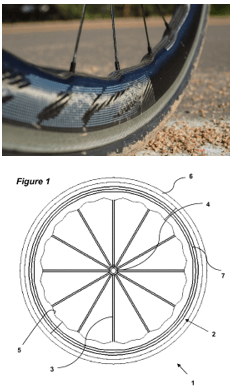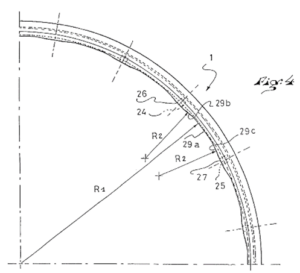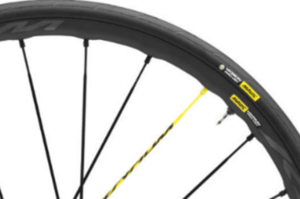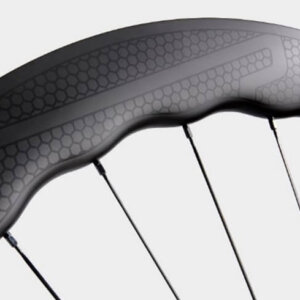Keen cyclists may be aware of a two-year patent stoush between bicycle component manufacturers SRAM and Princeton Carbon Works (PCW). Following a two-week trial, a Miami Jury has found that a carbon fibre bicycle wheel produced by PCW did not infringe two of SRAM’s US Patents.

The SRAM patents US 9,610,800 and US 10,611,188 relate to bicycle wheels having an undulating rim configuration. The design was said to be partly founded on biomimicry research into humpback whale fin tubercles, and is present in SRAM’s ZIPP NSW ‘saw-tooth’ wheel (shown right). The technology claims to promote controlled vortex shedding during crosswinds, shifting the centre of yaw pressure radially inwards and reducing yaw forces when riding in crosswind.
The broadest claims of SRAM Patent 9,610,800 recited a wheel rim with a radially inner edge having “an undulating configuration and a radial distance that continuously varies between adjacent peaks and troughs of the undulating configuration”.
The broadest claim of US 10,611,188 – a continuation of US 9,610,800 – recited a wheel rim having an “undulating curve configuration, the undulating curve configuration having peaks and troughs, and wherein the radially inner edge has convex profiles in convex regions of the rim, the convex regions including the peaks.” Both patents claimed a 2012 priority date.
Eagle-eyed cyclists may recall earlier ‘wavy’ wheel rims, such as the Mavic Ksyrium (below right) launched in 1999, which included a rim side wall of varying thickness, as set out in Mavic’s own US patent 6,402,256 (below left).
 |
 |
The earlier Mavic patent and other patent literature was cited as prior art during examination of both SRAM Patents by the US Patent and Trademark Office. SRAM was ultimately successful in distinguishing this and other prior art on the basis that prior art wheels did not teach continuous varying radial distance and/or had hump regions with concave profiles rather than convex profiles. The SRAM patents were granted in 2017 and 2020 respectively.

SRAM commenced proceedings against PCW in March 2021 claiming PCW’s Wake 6560 wheel (shown right) infringed both SRAM Patents. A Florida District Court issued a decision regarding motions for summary judgement in January 2023, which eschewed prolonged background and opens simply with “Our Parties sell expensive bicycle wheels”. The Court found that PCW’s allegations of invalidity in view of eleven prior art documents had sufficient basis to be put to a Jury.
However, the Court denied PCW’s motion for summary judgement for lack of infringement, considering there was sufficient basis in SRAM’s infringement allegation to put that question to the Jury also.
SRAM and PCW each submitted extensive expert witness evidence regarding the distinction between concave and convex, and the point of reference for assessment thereof. The experts predictably disagreed as to whether the peaks of the PCW wheel “extend radially inwardly” or “are purely concave”. The non-infringement argument advanced by PCW was that its wheel did not include either the “convex exterior profile” or “convex profile” requirement in both patents, and didn’t include the “continuously varies” radial distance limitation of US 9,610,800. PCW argued that the profiles of their undulations were akin to concave peaks rather than convex or dome-shaped bulges, which PCW said were required for infringement.
The Jury considered there to be no infringement of either patent, which rendered the question of validity moot. The Jury’s reasoning is unpublished, however, an inference is that the Jury was convinced by PCW’s argument that the Wake 6560 undulations were akin to the concave configurations of the prior art and therefore cannot constitute an infringement of the SRAM patents.
We will monitor to see if SRAM exercises its option to appeal.